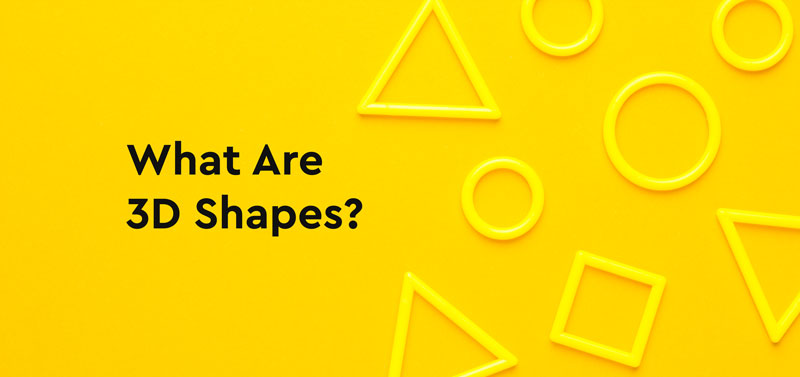What Are 3D Shapes – An Easy Explanation For Primary Graders
Shapes are everywhere, they are all around us. The book on your table is of a specific shape, and the wallet you are carrying is of a different shape. Learning about shapes helps us visualize and organize information and gives students a good introduction into the world of Math & Geometry. Shapes also helps us understand various signs & symbols and infer a meaning out of it.
Difference between 2D and 3D shapes
A 2D shape is something that can be drawn on a flat surface on paper. All 2D shapes have their own specific area and perimeter, and they contain sides, corners, and curves. Square, triangle, rectangle circle, hexagon, are all examples of 2d shapes.
A 3D shape consists of 3 dimensions – length, breadth, and height vs. the 2D shapes which have only length and width. Every 3D shape occupies some space and has depth. Examples of 3D shapes are; cube, cuboid, cone, and cylinder. These shapes have different surface structures that can be felt and touched; some are round, while others are flat. Examples of 3D shapes are; sphere, cube, cylinder, cone, prism, etc.
Children often get confused between 2D shapes and their 3D equivalent. For example; a prism or a pyramid shaped object, also looks like a triangle. To avoid this disparity, we have explained the properties of each shape and its counterpart in details, so that kids can be made aware of the difference between them.
2D Shape Circle
Properties of a circle: A circle has no sides or corners. It’s made of curved lines starting from any point and ending by making one full rotation. Every part of the curved line on a circle is equidistant from the central point.
Round objects: bangle, CD, wheels, coins

3D Shape Sphere
Properties of a sphere: A sphere is a round circular shape which looks like a ball. You can say it is a bulged circle. All points on the surface of the sphere are equidistant from the central point. It has no edges or corners.
Spherical objects – ball, planets, marbles, sun

2D Shape Triangle
Properties of a triangle:
A triangle is made of three sides and three vertices. The sum of all the angles of a triangle add to 180°. Depending on the measures of the angle and the length of the sides, the triangles are classified into different types; equilateral, isosceles, and scalene.
Triangular objects: Pizza slice, ice-cream cone, birthday cap, Christmas tree

3D Shape Triangular Prism
Properties of a triangular prism: The prism is a solid shape with two identical ends in the shape of a triangle. The sides of the prism are rectangular surfaces. The cross-section across its length is uniform.
Triangular Prism shaped objects: ice cube, Toblerone chocolate bars, pyramid

2D Shape Square
Properties of a square: A square has all four sides equal and all the corners form a 90-degree angle. The opposite sides of a square are parallel to each other.
Square objects: alarm clock, window frame, biscuit, piece of chocolate

3D Shape Cube
Properties of a cube: A cube is a solid geometric 3D figure which has 6 square faces. It has as many as 8 vertices and 12 edges. All sides of the cube are of same length.
Cube objects: Rubik’s cube and dice

Some Activities to reinforce the concept of shapes:
#1 Sorting Shapes
Give children a basket with different objects example; marble, block, cone, etc. and ask them to sort it as per the 3D shape category it belongs to. So, the marble has to be placed under the picture that has a sphere shape, and the block has to be placed under the picture of a cube.
#2 Shape Hunt
Introduce child to any one 3D shape say ‘prism’ and let him go around the class/home to look for items of similar shape around. Applaud his efforts and correct the child if necessary.
#3 Shape Quiz
In this activity, the teacher gives the students hints for guessing the 3D shape. Say for example; this is a solid 3D geometric shape that has 8 vertices and 6 square faces…guess the 3D shape.
Mathletics is a cool platform that supports 2,00,000 math teachers across the globe to give students the dual advantage of mastering the subject, while having fun. Schools across the world, including Dubai in the Middle East, collaborate with Mathletics platform, to go beyond conventional textbooks and make mathematics more interesting. Students are even rewarded with a certificate of achievement to motivate them to flaunt their achievements.






Recent Comments